Self-described by director Hany Abu-Assad as “a really important movie to show” and one that is quite special to him, THE MOUNTAIN BETWEEN US showcases not only his talents as a gifted storyteller, but his growth as a filmmaker in not only meeting but rising above, the challenges of a film like this. With this adaptation of Charles Martin’s best-selling novel by screenwriter Chris Weitz, starring Kate Winslet and Idris Elba, Abu-Assad finds that perfect storytelling meld with emotion and rich, beautiful, metaphoric visuals.
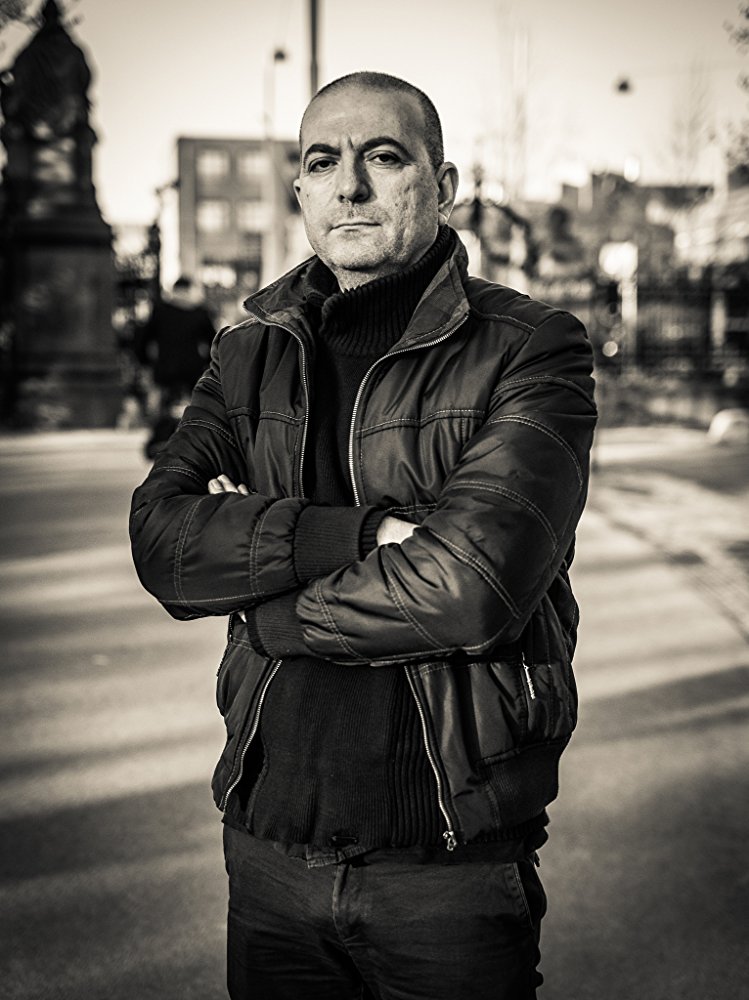
Early in the first act of THE MOUNTAIN BETWEEN US, we find our protagonists Ben and Alex alone on the top of a mountain following a horrific plane crash. It’s either die or fight to survive. There is a clarity of character, of story, and of the visual field. Everything is crystal clear. There’s no wind, there’s no weather, there’s not a stirring of sound or the elements, not a disruption or ripple for as far as the eye can see. Ben and Alex each know who they are, what they want in life. But as they start their trek down the mountain, Mother Nature rears her own ugliness with challenges and obstacles of wind, obfuscating trees, blizzards, frigid cold. The once crystalline world we saw atop the mountain becomes blurred as does Ben and Alex’s own emotional clarity.

When Hany Abu-Assad was first approached to director THE MOUNTAIN BETWEEN US, the script wasn’t yet completed but “Immediately, I fell in love with the topic. Survival turned out to be love. I felt that it was a great opportunity to work with big actors like Kate [Winslet] and Idris [Elba]. They weren’t involved yet, but I realized this movie can’t be done without great actors. But also, I saw this movie as a painting because it’s the white canvas. Your actors are the paint. But I still felt like the script needs development, so with Chris Weitz the writer we did a version that I was extremely happy with. I gave my notes and my direction, but the studio, too, and the producers. We were on the same page all the time, without a little fight. So this was a very pleasant experience in making a script that we sent to Kate and Idris. And they both fell in love with it.” Principal photography began in the dead of winter in December 2016 in Vancouver, British Columbia.
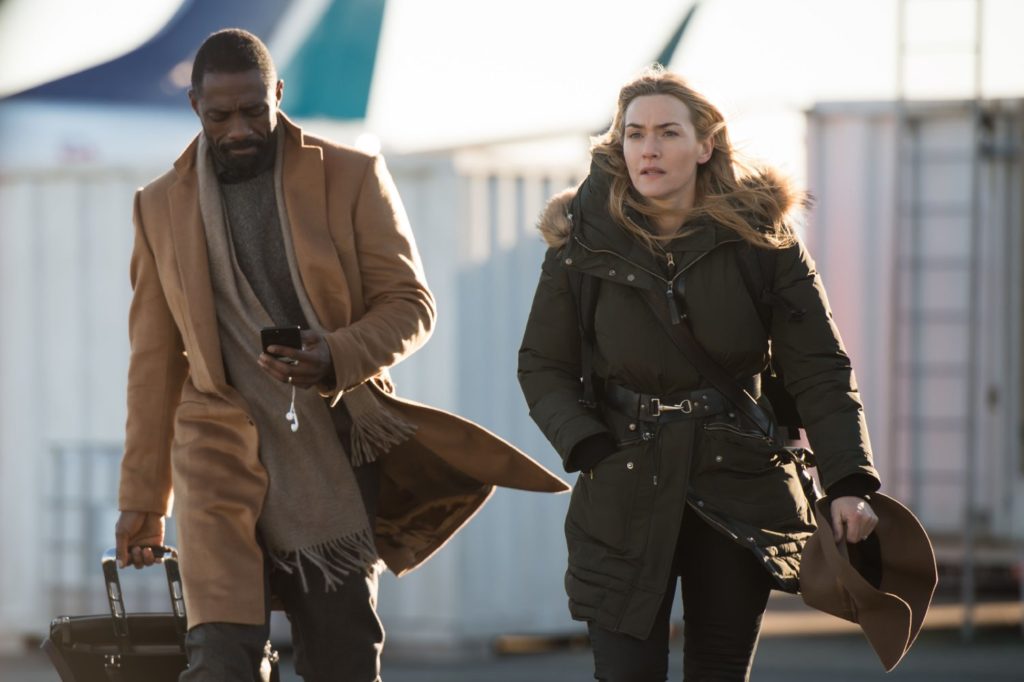
Important for Abu-Assad is that the actors themselves would dictate changes to the already solid script because both Winslet and Elba each “went so deep into their character. For example, Kate would come and say, ‘You know what. This scene is so important, but I have to do it in a different way that feels more honest.’ I allowed her to do that because I feel like actors are part of the creative process. They are one of the most important elements in the movie. They should feel involved in the creating of the character.” Mother Nature also got her hand into the act. “Nature was creating. An example – if there was wind, we shoot the scene in the wind. If the script says it’s a clear day, we don’t listen to the script. We listen to nature. I call it ‘embrace the weather’. You embrace just the weather. And second, you embrace your actors because they also have valuable experience that you need to use in order to get your picture done.”

THE MOUNTAIN BETWEEN US is not a film shot on a sound stage with CGI and green screen. Cast and crew went on a trek just like Ben and Alex, a trek that took them 11,000 feet up to the top of the mountain we see on screen. The only way to reach the location for both equipment and personnel was by helicopter and due to the uncertainty of weather conditions, all mountaintop shoots required that five days worth of supplies – food, water, shelter, heat, etc. – be on hand at all times. This begs the question for Hany Abu-Assad as to whether or not he was aware of the logistics that would be required for the making of this film when he embarked on the project. Born in Nazareth, Israel, the two-time Academy Award nominee has previously kept his feet on the ground near sea level with films like “Omar”, “Paradise Now” and “The Idol”.
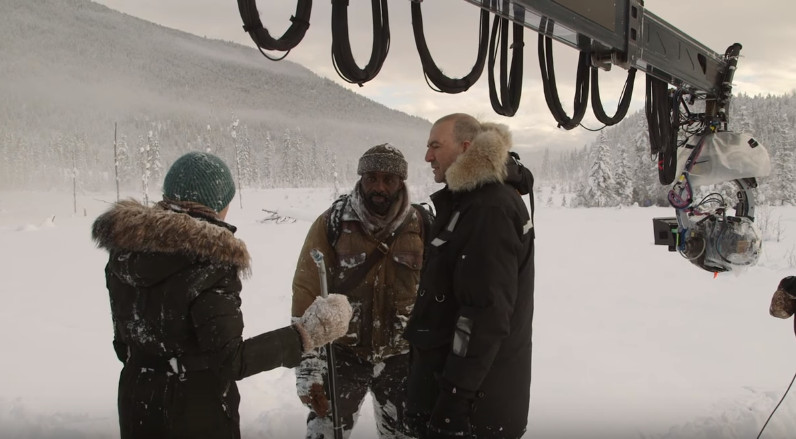
“I thought it would be easier. But you know, I don’t want to sound like a complainer. . . We had it really cold and a lot of suffering, but so what? It’s not the end of the world. I think if you make something to contribute to your society, and in this case, as an artist you are contributing a movie about human spirit and how strong human spirit can be, you shouldn’t be complaining about three months of having cold and suffering from brutal weather. So what? We should enjoy the result from that. . .This is my vision about movie making. Whatever it takes to make your movie, you do. You don’t want to endanger your life or the life of your crew, right? If it’s physically hard, so what? You know how many people work very hard to make things? Why would we complain about that. So yes, it’s true, it was physically hard. But it’s all for the sake of the art.”
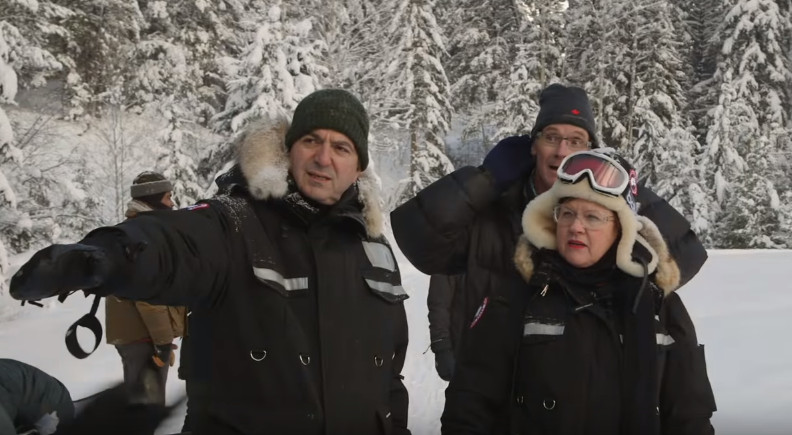
Working with cinematographer Mandy Walker, nominated last year for an Academy Award for her work in “Hidden Figures”, the goal for Abu-Assad was to translate that emotional journey “in a poetic way, but also realistic way. You want your audience to feel involved, but also you have to make it poetic. So it was a challenge and I think working with Mandy makes life easier in this challenge.”
For Abu-Assad, Walker made all the difference in the world to bringing his vision for THE MOUNTAIN BETWEEN US to life. “What can I say about Mandy. When I started working with her, I’m working with a big artist. Now she becomes a big artist but a friend also. And it’s real in this situation to feel connected, not just artistically but also on a deeper level. She’s funny. She has a good heart. She’s generous at giving her best.” And, of course, “I hope from the bottom of my heart that she will get an [Oscar nomination]. I think she deserves it. Totally.”

The collaboration between Abu-Assad and Walker in developing the visual tonal bandwidth of the film was both exacting and meticulous. As we start on top of the mountain, camera angles are extremely wide, setting the stage for the vastness of what lies before Ben and Alex. But what we also see as a means to establish the independence of each of the characters are separate shots. Abu-Assad and Walker don’t really allow us to see Alex and Ben together in the same frame until their journey down the mountain begins. Even within the crashed airplane, the film is shot and cut so that we have one character in a frame, the other in a separate frame. Very rarely do we see them together in a frame until the second act when the real journey begins. Then the lower they descend, the progressively tighter the framing.

In designing the look of the film and this storytelling technique with the lensing and framing, it all began with “references of pictures and paintings that we love. We made a selection of things with the production designer, a selection of pictures and paintings that we want to be inspired by. Then we made selections of movies that we want to be inspired by. And we came to the conclusion that there’s European directors like Tarkovsky and Kieslowski, both [who] have this realism in their picture, but also they have their poetic approach. This is the first inspiration. Then you start working. And you start sitting together every day for almost four hours first analyzing the theme.” For Abu-Assad, that thematic analysis begins with what he describes as a “shadow script”.
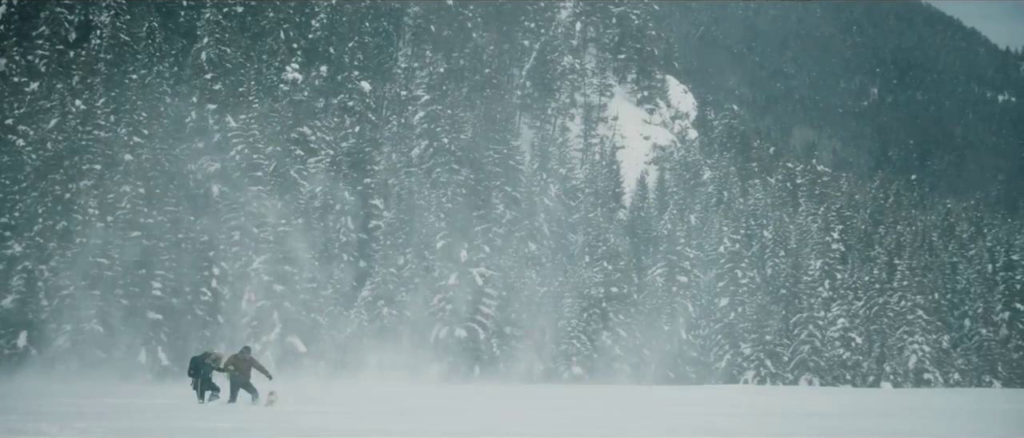
“What is it about? What do we get to know from this scene? What is the relationship between the actors and between the characters? So when you have your shadow script, then you start making your shots. You translate the inspiration and analyze everything to show the light and lens. . .An example – you don’t see them in one frame, so they get together down to the mountain. You use this kind of lens just in this kind of situation. For example, we had one lens which is a 45 mm but the focus, the depth of field, is 100 mm in order to create this tension between the general feeling and the detailed feeling. So all these things you develop after first talking to each other and [deciding] what we want to do from the movie. Second, you intellectualize it in the shadow script. Third, you translate it in practical solution.”
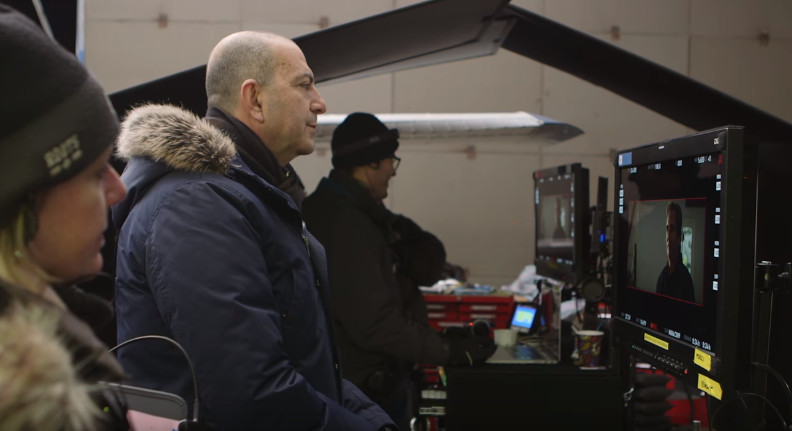
In addition to the film’s principals of Ben and Alex, plus the dog, two other characters are front and center – the mountain and sound. Sound is very much a character in THE MOUNTAIN BETWEEN US. Much like Abu-Assad worked with Walker, he also did with sound designers/editors/mixers, Andy Nelson and Ai-Ling Lee. “We spoke about [the film] the same way. We spoke about it in length. How to create from the sound, how to make it a more active character rather than passive character; making tension between silence and noise, between the sound of wind and the sound of water, between the sound of clouds, the sound of snow. All these sounds, if it’s well designed, you can create a character that plays in the moment.”
But not only was Abu-Assad working with the ambient sounds of ice cracking, of snow falling, of the wind, the crackle of fire, in addition to dialogue, there’s also Ramin Djawadi’s exquisite score.
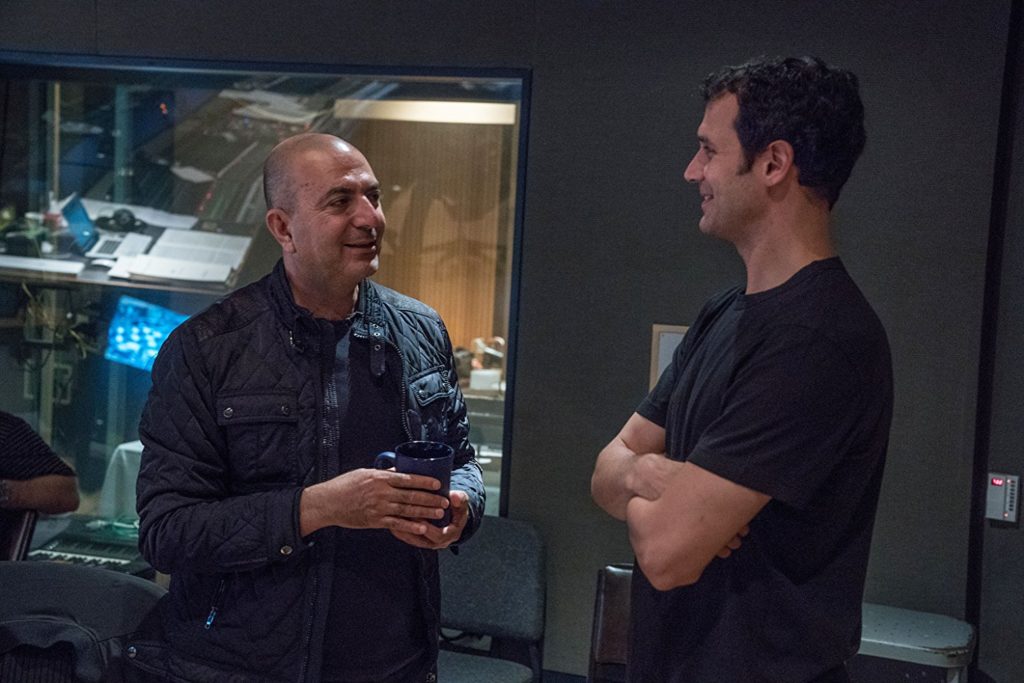
Interwoven into the soundscape, there is a great emotionality of composition within the score. According to Abu-Assad, “Ramin is great. Ramin in so talented that he can combine the dynamics of the music together with the aesthetic of the music. Ramin is very good in progressing the story, in dynamics of the story. His music can feel as a progression to the story, rather than just support it. But it also combined with the beauty of details. You can feel both in the music; the beauty of it and also the dynamic of the music in elevating the story.” Key is Abu-Assad’s philosophy that music is only used in a scene if it elevates it. “If it’s just helping the scene, then the scene is not good. So then we have to do something else with the scene or the music. But we use the music just when we feel that the music elevates it.”

Best described as music that never leads, but “feels”, notable is that Abu-Assad never uses music in his movies. THE MOUNTAIN BETWEEN US is an exception. “Most of my movies in the past had no composer. But this time I felt how important to work with a talent like Ramin so that he can make the music, as you said, visible. It’s visible in the emotion. You feel it. . .He would bring me to his studio and let me hear what he wants to do and then I react to it. It was so fabulous to see how my reaction affects his evolving in making the music better and better. A fabulous experience. In the future, I will always try to find a good composer because he taught me that this can be an extra process that you can enjoy and bring your movie to an even higher level.”
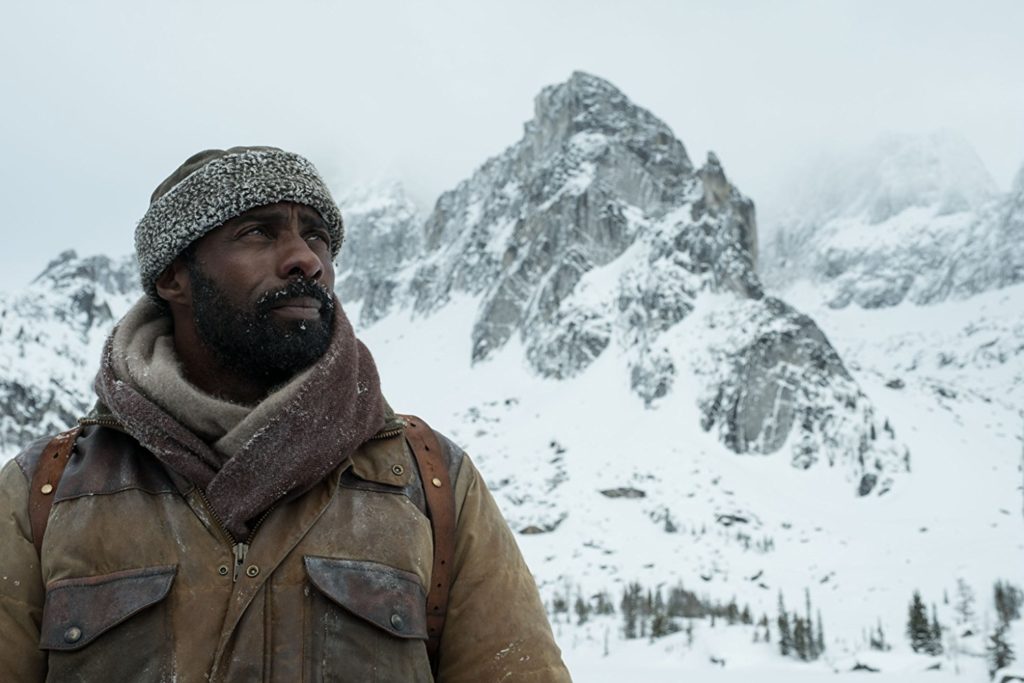
With THE MOUNTAIN BETWEEN US, ratcheting up tension is critical to keeping the audience engrossed, involved, and on the edge of their seats as the intensifying question of survival for Ben and Alex is ever present. Working with editor Lee Percy, Abu-Assad had complete faith in Percy’s expertise and welcoming collaboration. “The first cut was his cut. Then we start to talk about, let’s say, ‘What do you think is a representation of the script? But let’s think outside of the box.’ And Lee was open to that.” Going back and forth, they would test ideas and cuts. Believing this the “the best way to do things”, Abu-Assad would go on “instinct and experience” to make scenes better. “[Lee] came up with a lot of good ideas that I adopted. We did the two test screenings. It helped us enormously to understand our work. We showed it to the studio and to the producers in our early stage and they all came up with ideas. You do it and you show it. And if it’s a bad idea, nobody’s going to see that. You throw it away and continue just putting together the good ideas that everybody agrees on.”

One good idea that everyone agreed on is the dog. [Spoiler alert: The dog lives!] Another key character, the dog was the constant companion of the plane’s pilot [played by Beau Bridges], and survives the crash along with Ben and Alex. As all filmmakers know, it’s one thing to work with animals in optimum or normal conditions, but what about in adverse conditions such as those in THE MOUNTAIN BETWEEN US, making casting particularly important.
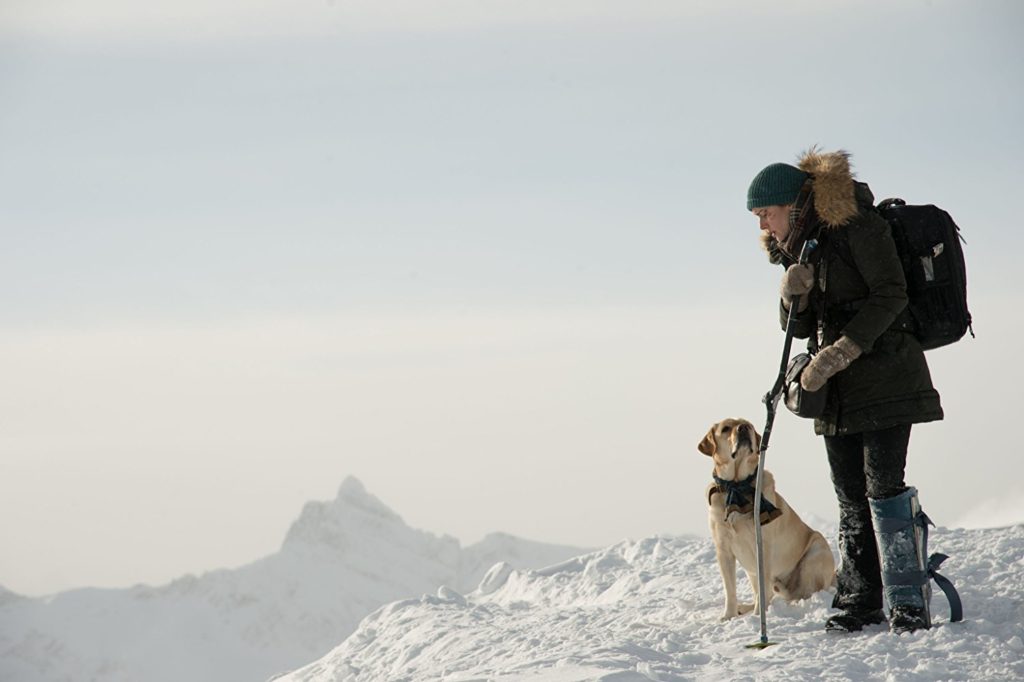
Without hesitation, Hany Abu-Assad joyously admits “We all fell in love with this dog.” However, finding this dog was not an easy task. “I casted him. We had a lot of dogs. I think ten or so to choose from. First we went for a more trained dog [believing] that he would listen better. The next day I realized, ‘You know what. He won’t break your heart from his looks. He’s a good actor, but he’s not a good looking actor, let’s say. Not good looking in the sense of beauty, but his eyes.’ The next day I said to my wife, ‘I think I’m going to change the dog. I feel like the other one, Riley, the second one where everybody felt like he’s not good listener – he won’t listen to you – but I felt at least his face is more convincing than the other actor. His eyes. So I changed the dog.” One look at Riley on screen and you know Abu-Assad made the right choice. Riley’s eyes are as expressive as anything delivered by Winslet or Elba.

As comes as no surprise, there had to be on diva on set and that diva turned out to be Riley. “I fell in love with him, but he was a diva. He wouldn’t listen all the time. Thank God our actors behaved very professionally. But we had to have one actor diva and it was the dog. But when you see the dog, when you see the results, you feel like I made the right choice. His face is so . . . It’s a character. It’s almost human.”

The journey of Ben and Alex isn’t the only journey that unfolds with THE MOUNTAIN BETWEEN US. Hany Abu-Assad went on his own journey. The biggest and most challenging project he has tackled to date, he is “happy that I did it for many reasons. One of the reasons is, if God forbid something will happen to me and I would be in this kind of situation, I know now how to behave. It’s important to have a guidance. I hope I won’t have this in my life. Nobody wants a disaster in this life. But in case, just the idea that you know how to behave makes you have less fear that something bad’s going to happen to you. But second, as a human being you realize what’s important in life. In civilization there’s a lot of noise. You can’t really be with yourself. There is the phone call. There is the work, and kids, and the wife, and the mother, and the friends, and the neighbors. You have so many possibilities you don’t have time to think about what really matters in life. And you realize, after doing this movie, what matters in life actually is not survival, but it’s giving and it’s helping, understanding, and it’s communication, which is ultimate love. I feel like I am not just wiser but I got to enrich myself in the experience of how to behave in a difficult situation. But, as a human being you know what’s important in life more than before. You appreciate small things like a hot shower. You know that hot shower in the film? I just added it because it was my own experience. Being in the cold so long, and when I came back to my hotel, I took that shower, I cried because I started to realize how important these things that you don’t normally appreciate, you start appreciating. I’m happy that I made a movie that you think is beautiful. But I’m happy that I also had this experience, as a human being and as a filmmaker.”











